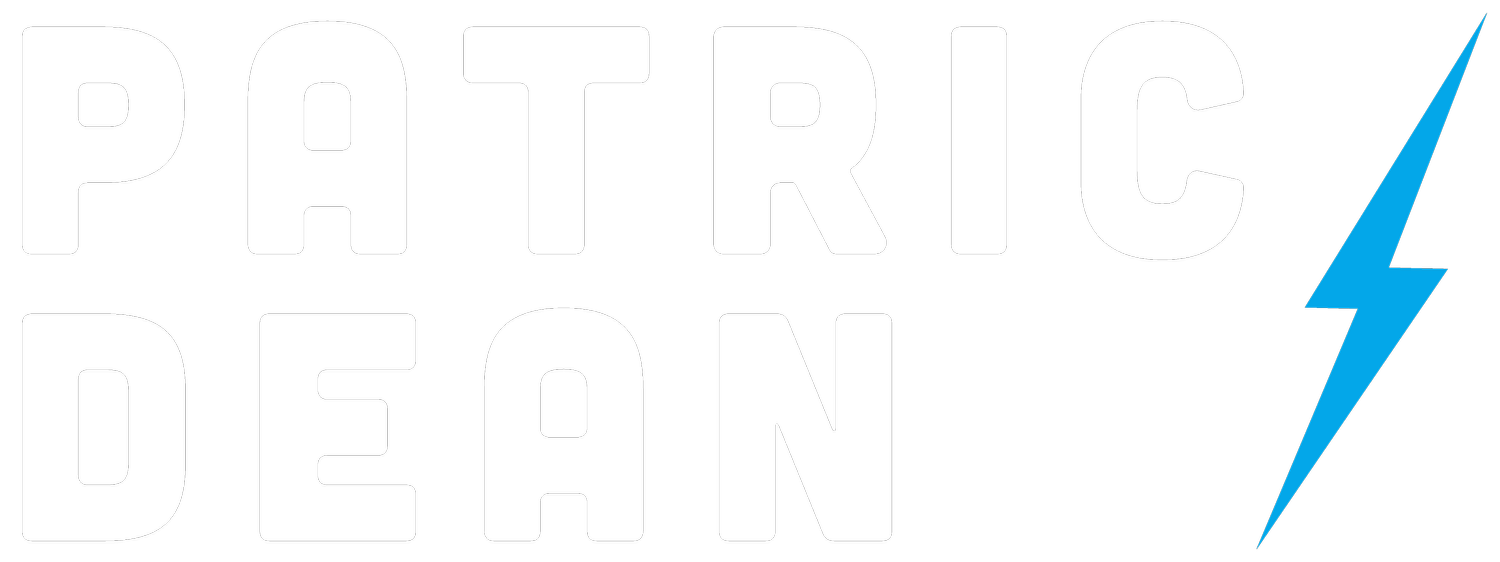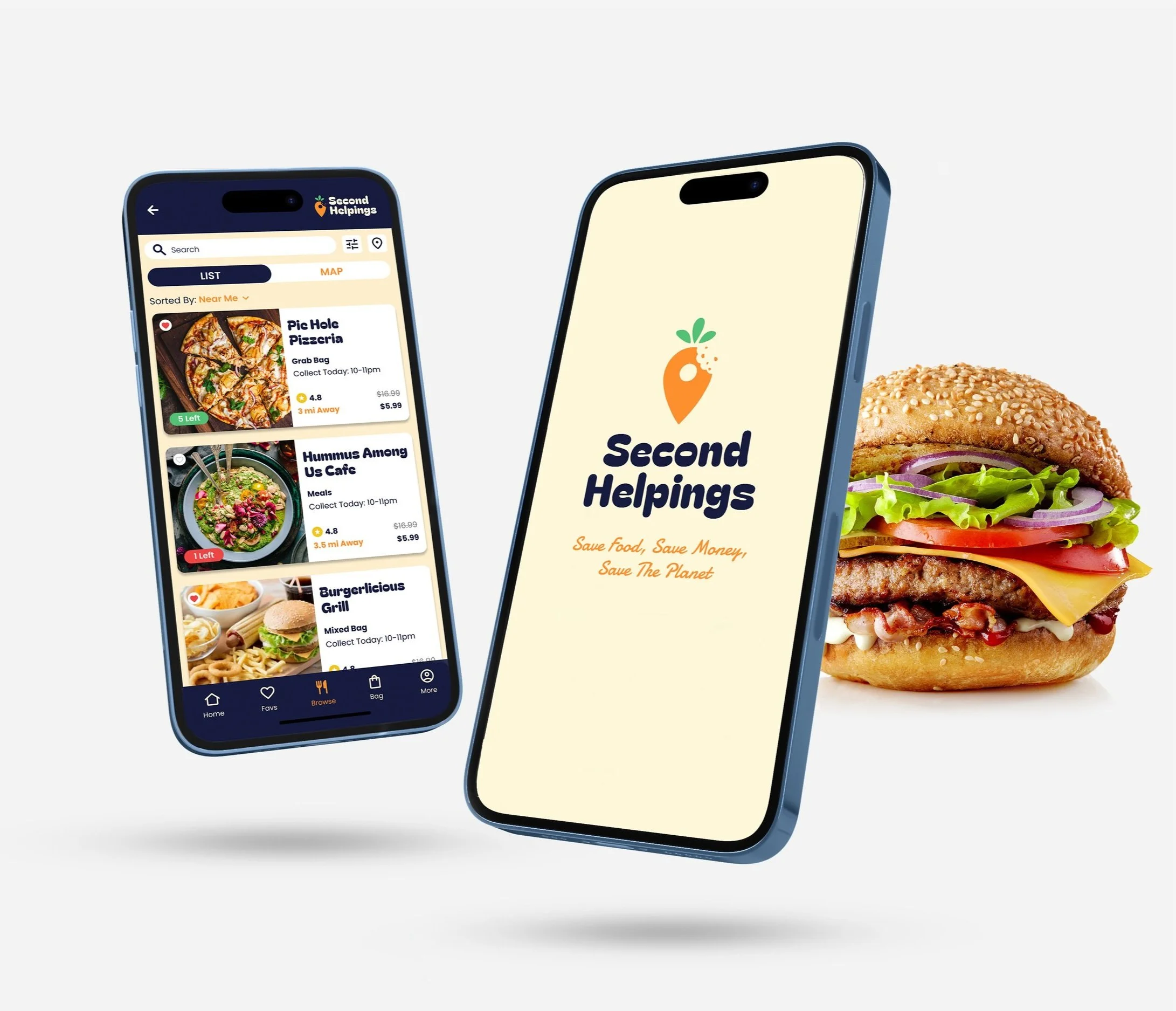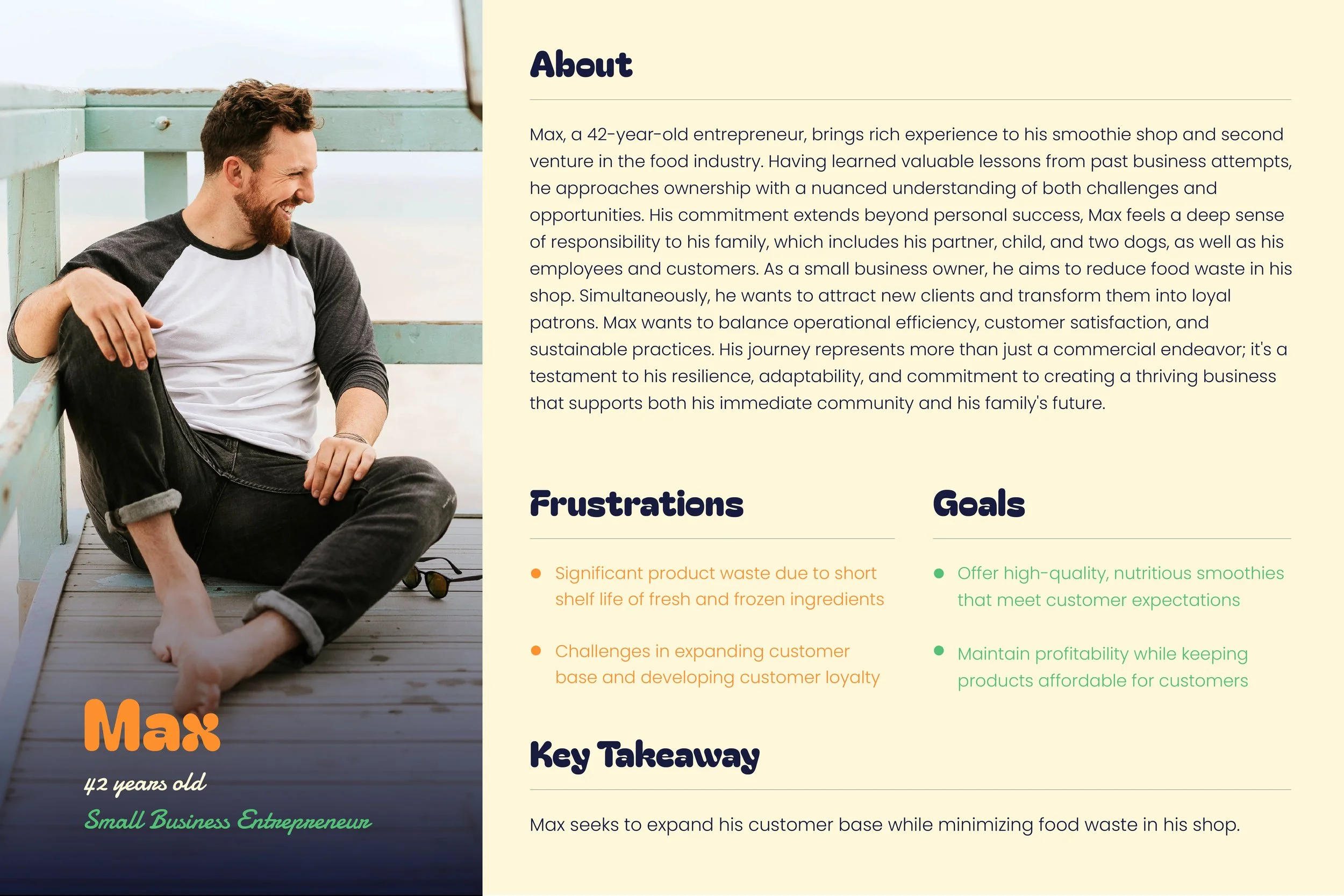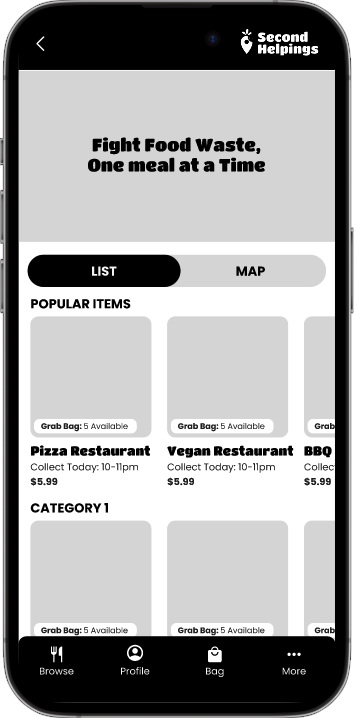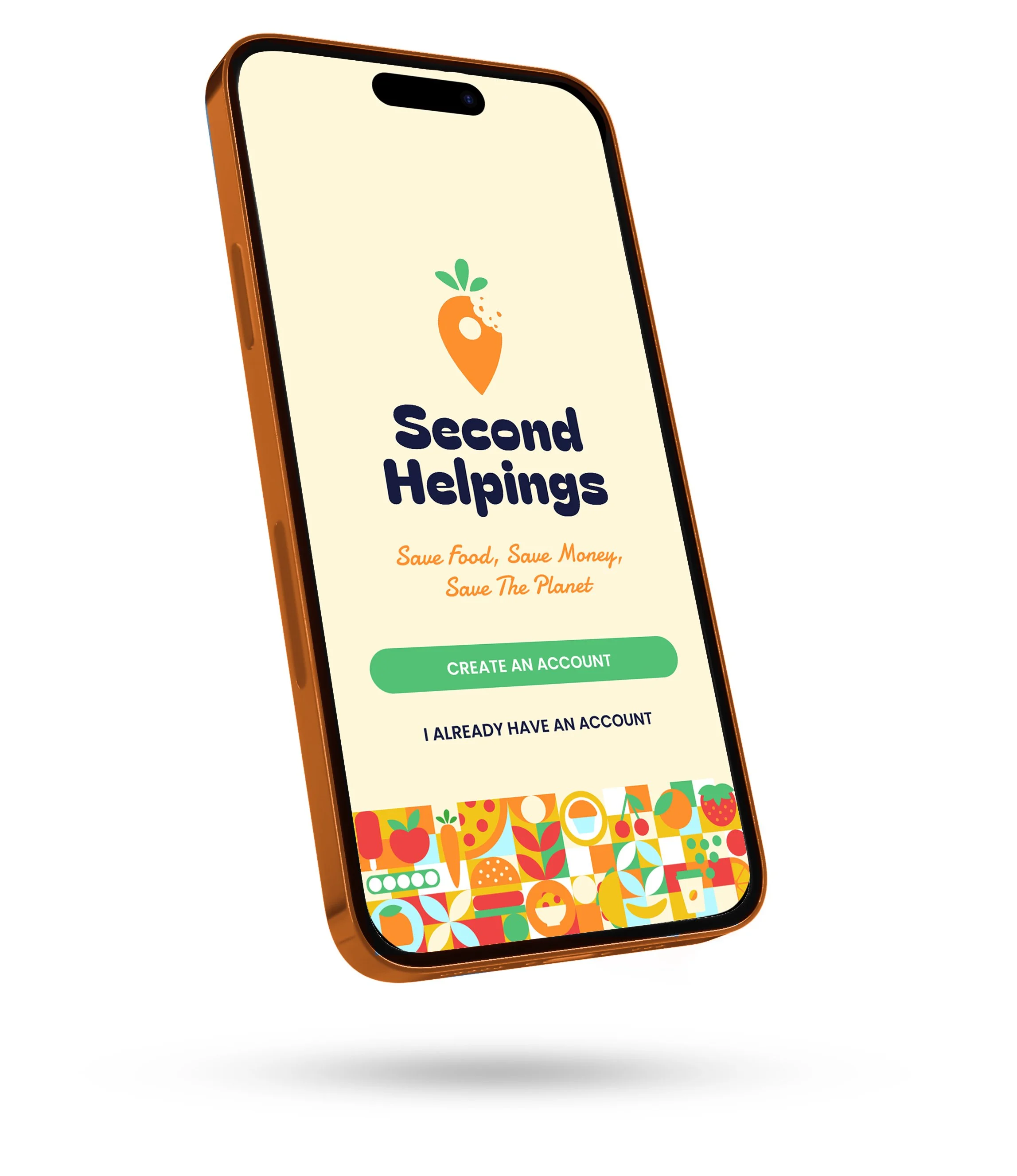Second Helpings
App & Website
An app created to reduce food waste by connecting local consumers to businesses with surplus food.
Individuals need access to a variety of affordable, high-quality food items. Stores and restaurants who sell consumable products with a short shelf-life need to make a profit to stay in business. When food is wasted, all the energy and water it took to grow, harvest, transport, and package it is also wasted. We can do better.
SKILLS
Figma, Adobe Creative Suite, Research, Wireframing, User Interview, Design System, Prototyping
The Mission
The primary goal of the Second Helpings app is to create an intuitively designed platform that seamlessly connects customers with local food products, ensuring affordability and accessibility. Second Helpings benefits stores and restaurants by providing a unique opportunity to expand their customer reach and sell products before their expiration date. By connecting these two groups, Second Helpings not only prevents food waste, but also promotes a sustainable and responsible approach to utilizing resources in the food industry.
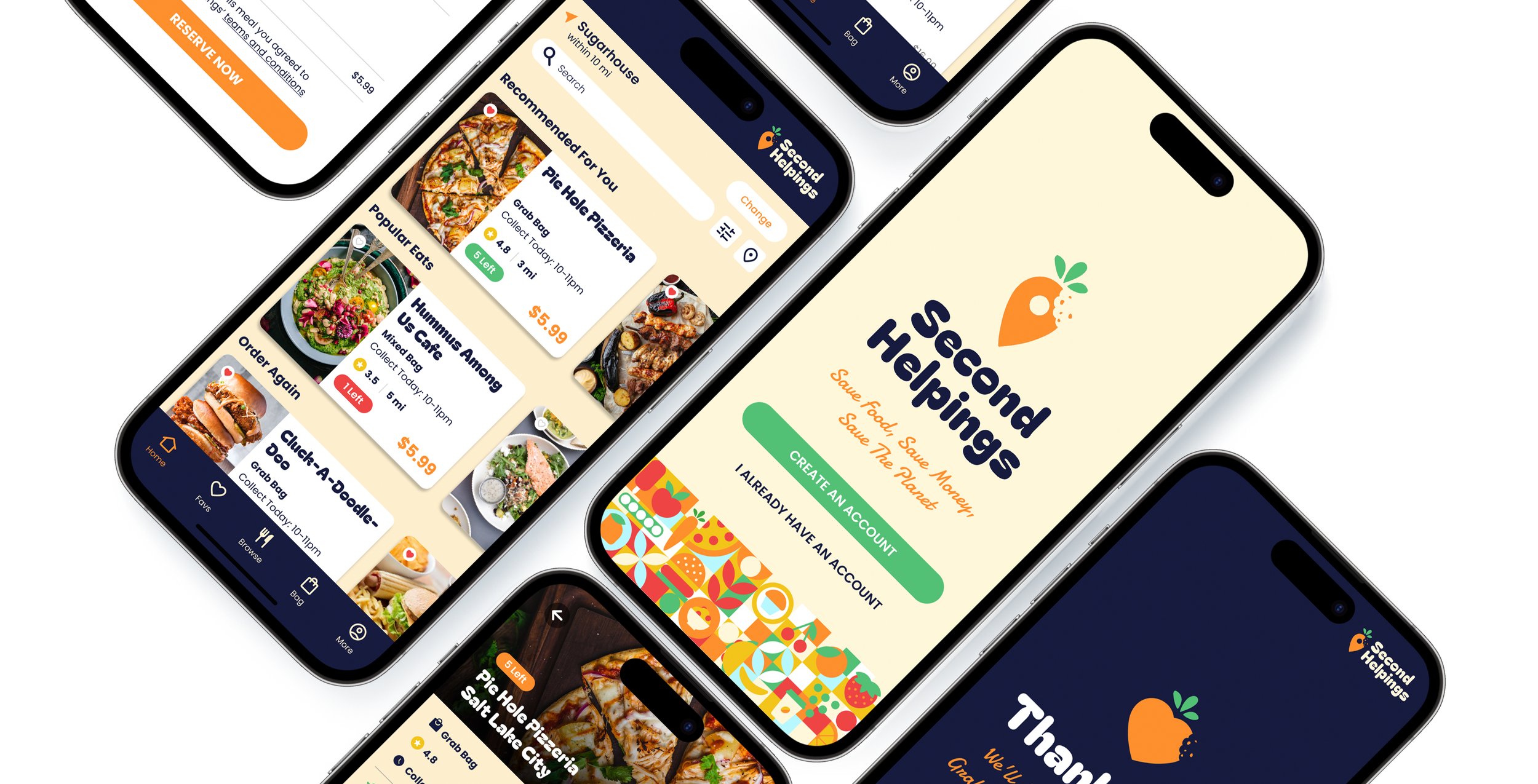
User Research
Phase 1
I started with initial research to learn more about what was already being done to reduce food waste in the United States and Utah. I explored various resources and companies to learn more about what they had to offer and what their areas of opportunity were:
Who is currently meeting this need?
Waste Less Solutions: Extensive list of local food donors, but not readily accessible to the average local, coordinates solely with organizations (i.e. Rescue Mission, Boys & Girls Club, etc.)
ExtraBites: Founded in 2022, no longer in business
Too Good to Go: International reach, but no businesses in Utah on this platform currently
Animalia: Community food waste collection for composting, and is closing in 2023
Phase 2
Interviews were conducted and empathy maps were created to better understand the user needs. Participants were divided into two groups: those individuals who are using the app to find affordable, local food, and those businesses looking to sell their surplus food to local customers.
What do Customers need?
Access to affordable food
A variety of high-quality, nutritious options
What do businesses need?
A larger pool of potential customers
Optimize profits
Reduce food waste
Pain points
In identifying the major pain points and gaining valuable insights from my interviews and research, three pivotal findings emerged as the key takeaways from this process:
-
The rising costs of groceries and dining out can be a significant barrier for many individuals and families. Users need access to affordable, high-quality food.
-
Businesses in the food industry face a unique challenge of reducing waste while maximizing their profit. Food regularly gets thrown out due to overproduction, expiration dates, or aesthetic imperfections, resulting in a loss of income, as well as the cost of making the goods.
-
Excessive food waste not only has a dramatic impact on businesses but also poses significant environmental challenges. Companies want to have a more global mindset and conduct business in a more sustainable fashion.
Personas
The Focus
After the user research, I came to the conclusion that there would need to be 1) a user-facing app, 2) an order management app for the business, and 3) a website for further information. The following is the user-facing app journey.
Lo-Fi Prototype
User Flow
Create a profile and sign in
Input location
Browse participating businesses
View food offerings
Reserve bag
Check out and complete order
Usability study: findings
Hi-Fi Prototype
User Flow
Create a profile and sign in
Input location
Browse participating businesses
View food offerings
Reserve bag
Check out and complete order
Wait for confirmation notification
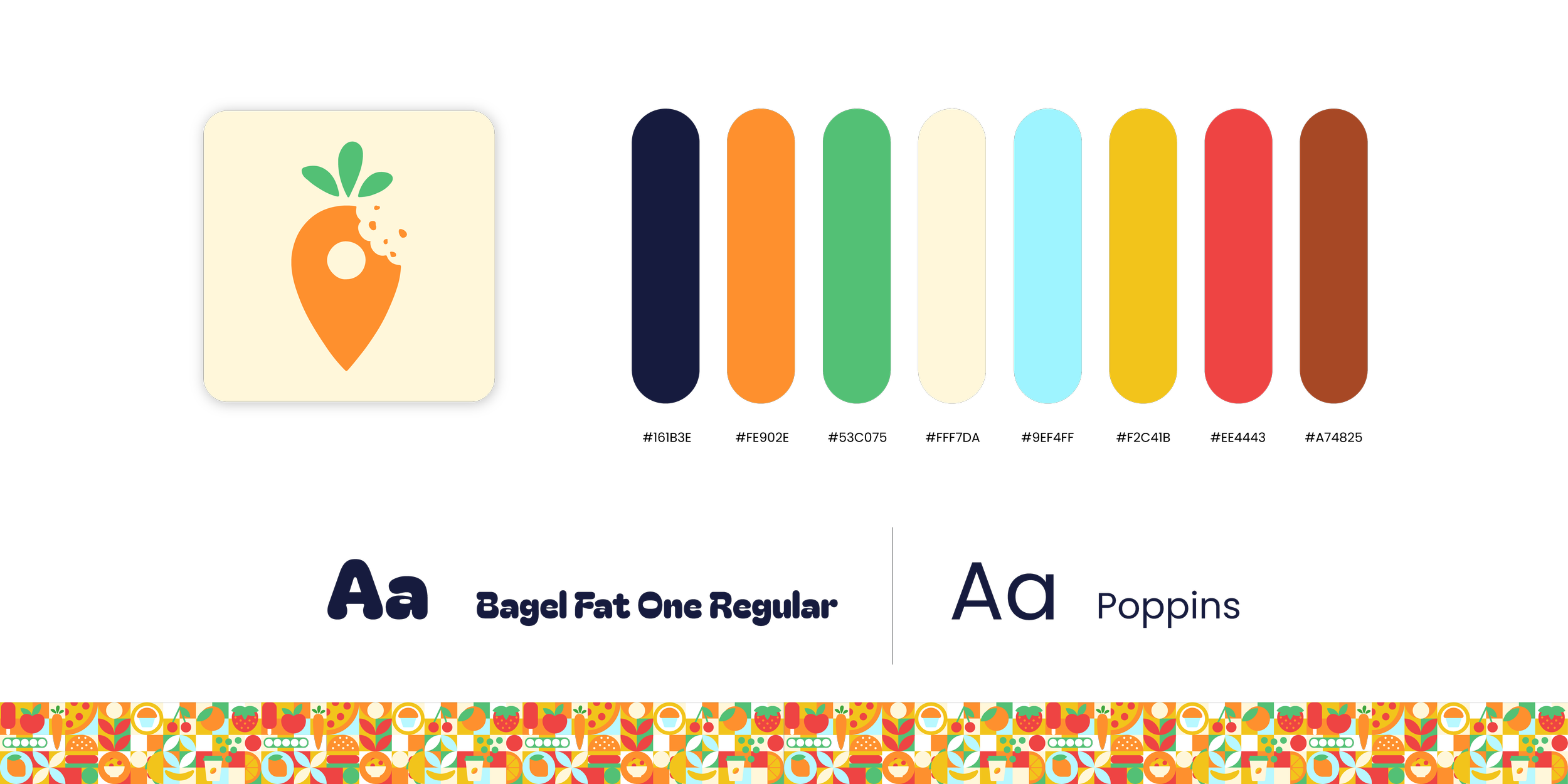
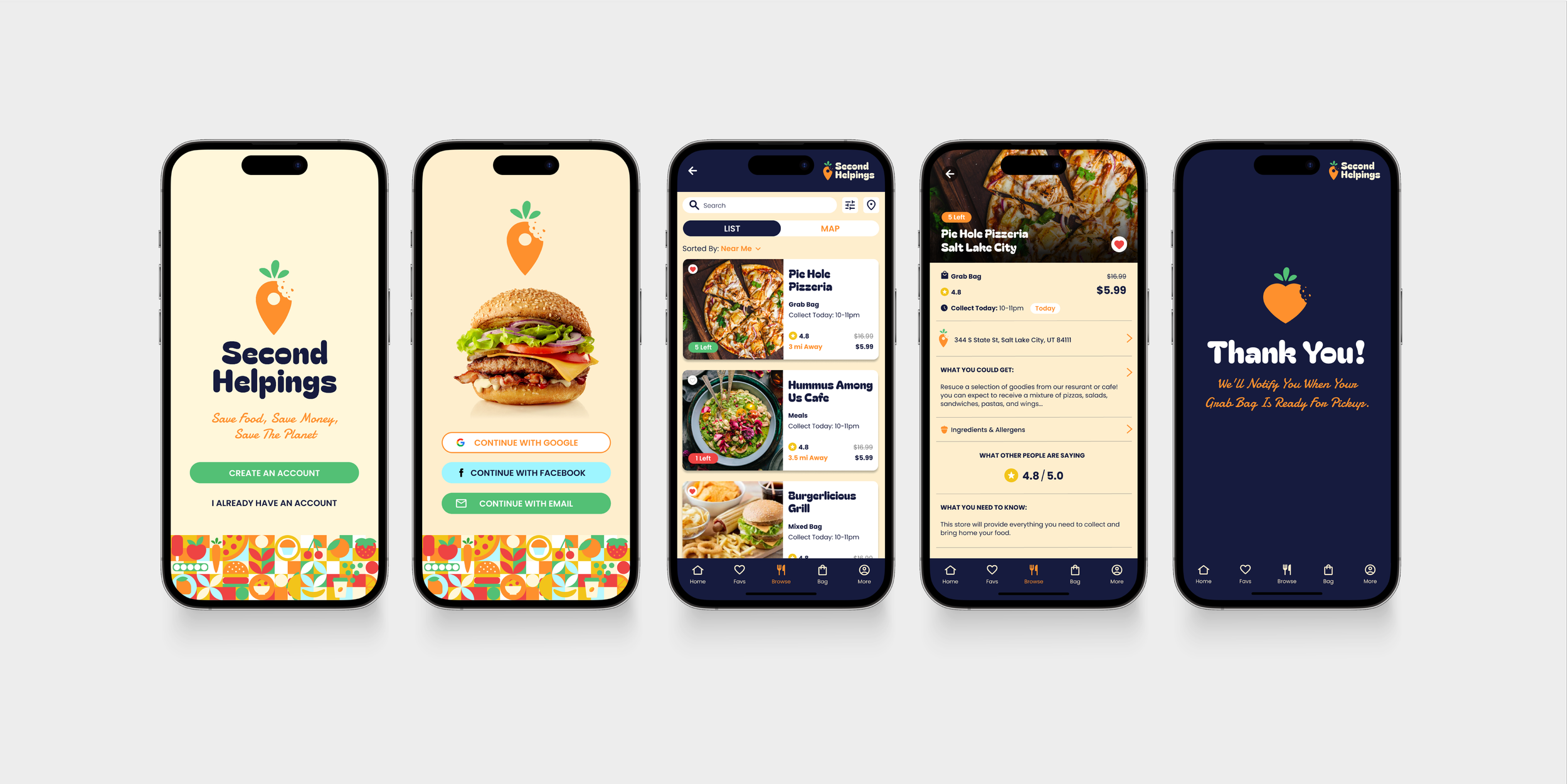
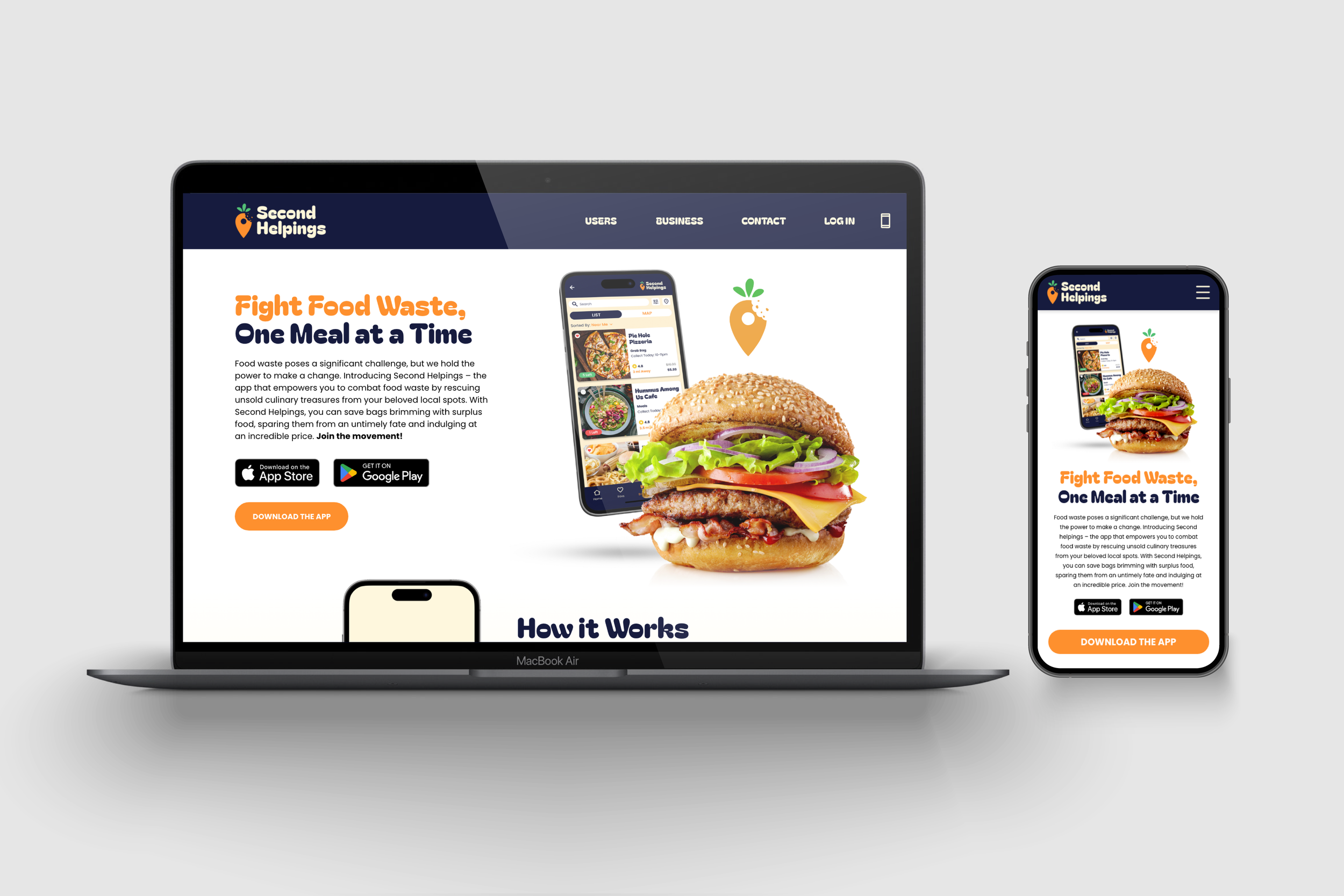
Reflection
Creating an app aimed at reducing food waste has been a fulfilling and rewarding experience for me. By connecting customers with local businesses, this app has the potential to bring communities together while helping solve food scarcity by making products more accessible and affordable. This app is one small part to addressing a larger issue and there are many areas of opportunity to explore, including outreach beyond the state and local community.
